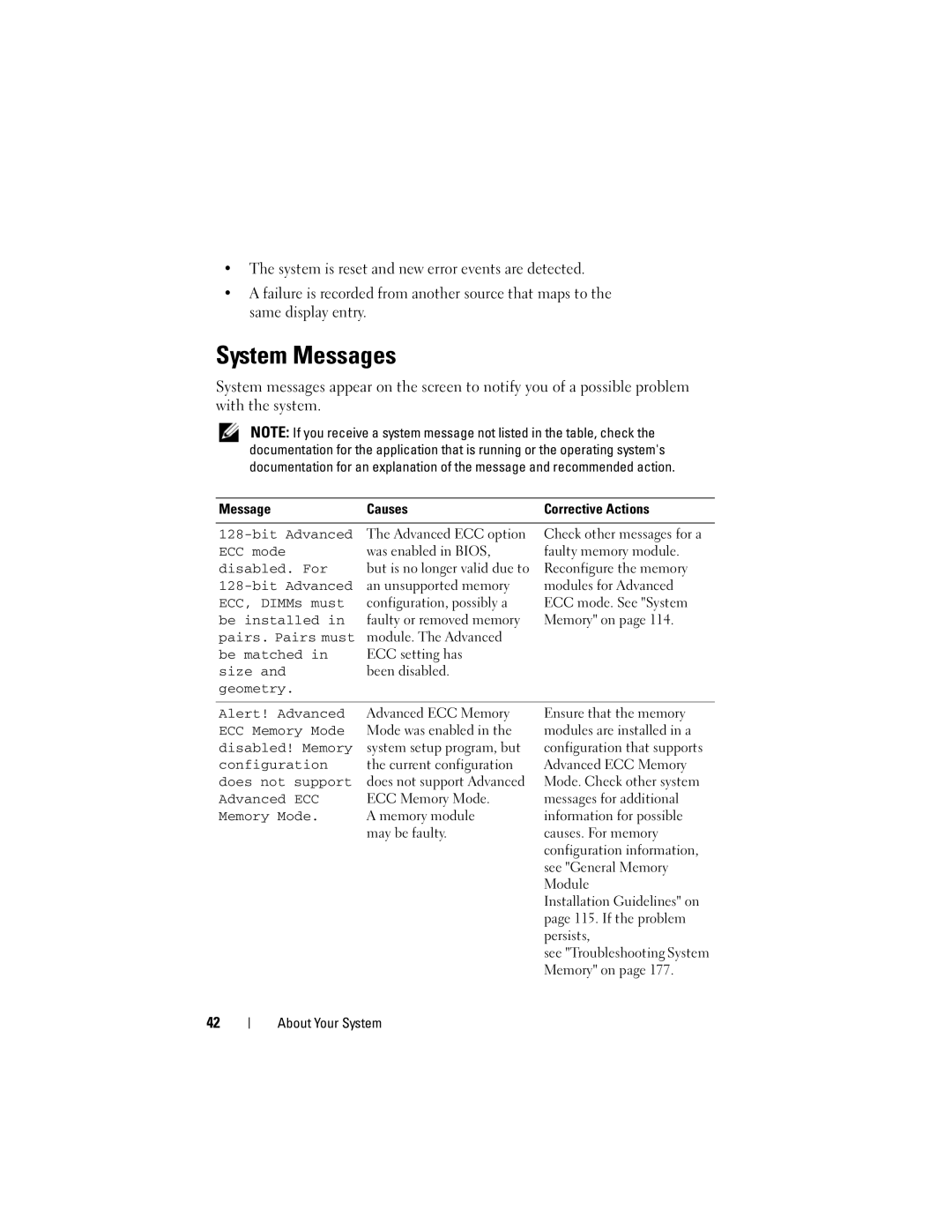
•The system is reset and new error events are detected.
•A failure is recorded from another source that maps to the same display entry.
System Messages
System messages appear on the screen to notify you of a possible problem with the system.
NOTE: If you receive a system message not listed in the table, check the documentation for the application that is running or the operating system's documentation for an explanation of the message and recommended action.
Message | Causes | Corrective Actions |
|
|
|
The Advanced ECC option | Check other messages for a | |
ECC mode | was enabled in BIOS, | faulty memory module. |
disabled. For | but is no longer valid due to | Reconfigure the memory |
an unsupported memory | modules for Advanced | |
ECC, DIMMs must | configuration, possibly a | ECC mode. See "System |
be installed in | faulty or removed memory | Memory" on page 114. |
pairs. Pairs must | module. The Advanced |
|
be matched in | ECC setting has |
|
size and | been disabled. |
|
geometry. |
|
|
Alert! Advanced | Advanced ECC Memory |
ECC Memory Mode | Mode was enabled in the |
disabled! Memory | system setup program, but |
configuration | the current configuration |
does not support | does not support Advanced |
Advanced ECC | ECC Memory Mode. |
Memory Mode. | A memory module |
| may be faulty. |
Ensure that the memory modules are installed in a configuration that supports Advanced ECC Memory Mode. Check other system messages for additional information for possible causes. For memory configuration information, see "General Memory Module
Installation Guidelines" on page 115. If the problem persists,
see "Troubleshooting System Memory" on page 177.
42
About Your System
